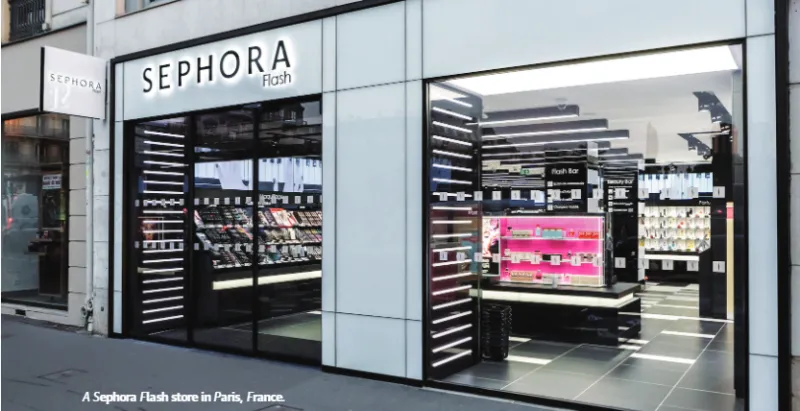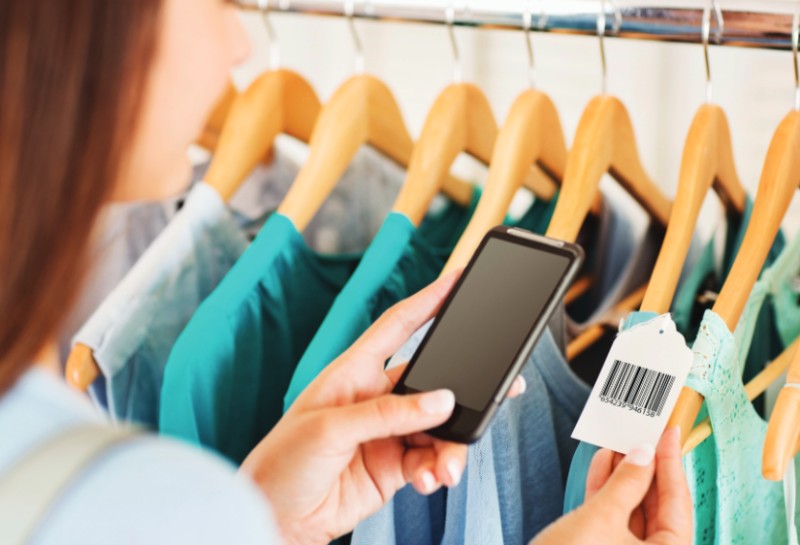Engaging shoppers is no longer as simple as greeting customers when they walk into a store. Today, the average consumer uses several devices and channels for a single transaction, and expects to receive a unified or “omnichannel” experience throughout the buying journey. The good news is that omnichannel retailers are getting closer to bridging the gap between channels, although challenges remain. Here, we examine the current state of retail and the innovative approaches that are shaping future user experiences and customer service.
Endless aisles
Premium jeans maker True Religion offers a wide range of denim in various washes, colors, and styles, but its stores are typically small boutiques with limited inventory. In the past, shoppers were simply out of luck if a specific item wasn’t in stock at a physical stores.
But in the highly competitive retail space, True Religion can’t afford to turn customers away. It instead created an “endless aisle” solution, with help from Aptos and Formula 3 Group. Associates now wear Apple Watches embedded with an app called Band that integrates order management and mobile point of sales tools, as well as CRM and loyalty program data to deliver a more complete customer experience.
Here’s how it works: Swiping a finger across the Apple Watch screen lets store associates access True Religion’s full inventory and filter it by size, style, color, or wash. Associates can then send the image of the merchandise from the watch to a large high-definition monitor for the customer to view.
The image includes a barcode that can be scanned to complete the sale and items that are not in the store are shipped to the customer’s home. Consumers who have downloaded the app can also opt into alerting associates when they’ve entered a True Religion store to receive more personalized service.
An endless aisle combines key parts of the online and in-store experience to better engage the customer, says John Hazen, senior vice president of direct-to-consumer and omnichannel at True Religion. “The number one thing [the Apple Watch and Band app] have done is slow the customer down,” he says. “When a customer slows down, we are more likely to convert them. The customer is simply more engaged, and our store associate can ‘throw’ products on the screen to start a conversation based on what they are looking at in store. It creates more (and longer) one-on-one moments.”
The program is still in its early stages. True Religion has distributed approximately 30 Apple Watches, with each store receiving one watch for the store’s May soft launch. The watches are offered as a perk to the best associates, Hazen says.
The digital dressing room
Retailers are using technology to connect online and offline experiences in other ways, as well. For instance, luxury clothing designer Rebecca Minkoff’s flagship store in New York City is outfitted with interactive screens that provide assistance.
In the fitting room, shoppers can tap the mirrors, which are powered by eBay, to activate product screens that recognize the RFID-tagged clothing in the room. As shoppers try on the clothing, the mirror displays suggested items that complement the clothing on one side of the mirror. If the customer is unsure about a particular item, she can save her fitting room session to an app and purchase the item at a later time at the store or online.
On the back end, store managers are able to track which items are taken into the fitting room, what is purchased/not purchased, and which styles resonate with their customers.
On the store floor, shoppers can tap interactive mirrors to flip through look books of outfits or place an order for coffee or a glass of champagne while waiting for an available dressing room. To place a drink order, shoppers must enter a phone number, which store associates use to communicate with them when their drink or dressing room is ready.
While the Rebecca Minkoff brand is largely known for its handbags, the connected store has led to a boost in clothing sales. Within six months, the company saw six to seven times increase in ready-to-wear sales, which it attributes to its enhanced in-store experiences, according to Emily Culp, senior vice president of e-commerce and omnichannel marketing, in a video about the company’s connected stores. The company has also opened connected stores in Los Angeles, San Francisco, and Chicago.
Sephora Flash
Sephora, the cosmetics giant owned by LVMH, is trying out its own digitally connected store. Last year, the company opened a new boutique called Sephora Flash in Paris with help from Worldline, an e-payment services provider. In a statement, Sephora points out that at 100 square meters, the boutique is much smaller than its average physical store, which is typically 400 square meters. The company makes up for the lack of physical space with a digital catalogue.

Upon entering the store, customers pick up a near field communication (NFC)-enabled card that serves as a virtual shopping basket. A limited selection of products is available on the store’s shelves, alongside screens with a digital catalogue of more than 14,000 products. If an item is not in stock at the store, customers can supplement their physical shopping basket by adding the order to their digital basket with the card.
Shoppers can also find more information about a product, such as a perfume, by placing the tester, which is equipped with an NFC tag, on a reader and adding the item to their virtual basket. Both physical and digital purchases are paid for at the checkout counter in the boutique. Plus, customers can choose to have online items delivered to their home or pick them up at the Sephora Flash store.
While Sephora’s massive flagship stores are still popular shopping destinations, maintaining such stores is expensive. Blending physical and online shopping experiences in smaller outposts allows brands to supplement the benefits of shopping in a brick-and-mortar store with a website’s virtually limitless inventory. Unsurprisingly, Sephora has said it plans to open more Flash locations in areas where the larger stores don’t have a presence.
Omnichannel retail fulfillment
Enabling store locations to serve as fulfillment centers is also a growing priority for retailers. According to research from PricewaterhouseCoopers, 71 percent of retail and consumer goods CEOs say omnichannel fulfillment is a top or high priority.
Omnichannel retail fulfillment is comprised of three initiatives: Buying online and picking up the merchandise in a store (also called click-and-collect), ship-from-store, and endless aisles. Making more efficient use of store inventory has clear benefits for customer experience and retailers, but logistical challenges and high costs make it difficult for most retailers to quickly optimize their fulfillment operations.
“The retail store wasn’t built to be a cost effective fulfillment center,” observes Forrester Research Analyst Adam Silverman. “And the retailers that rushed into providing services like ship-from-store often didn’t think clearly enough about the long-term expenses.”
For example, while retailers are accustomed to shipping large orders to stores, frequently sending small shipments directly to customers or stores is a different and more expensive practice. Retailers must also decide how long to hold inventory (in case a customer orders it online) before making it available on the store floor.
Retailers may even reach the point where they can tie information from an order management system with a CRM system, Silverman adds. “The retailer might be willing to spend more to fulfill an order faster for a high-value customer and that’s where CRM data can eventually work with order management,” he says. “Retailers are wrestling with these challenges and more as they gain more maturity in how they run their omnichannel businesses.”
Although connected stores show promise, examples like True Religion, Rebecca Minkoff, and Sephora are still in the minority. There are numerous challenges to adopting new technology in a way that’s sustainable and profitable. Companies should be wary of implementing technology solutions without a long-term strategy for integrating those systems into the organization, warns Nikki Baird, managing partner at Retail Systems Research.
When it comes to adopting Internet-enabled devices, many “retailers are being unrealistic about how quickly the technology will be adopted and make a significant impact on their businesses,” Baird says. “The challenge for retailers is that IoT [Internet of Things] is a platform technology, with many applications across almost every organization within a retailer. But if too many divisions run off and pilot and test their own individual use-cases…the retailer will end up with islands of IoT and no ability to leverage its investments across the company or even across the customer journey.”
















